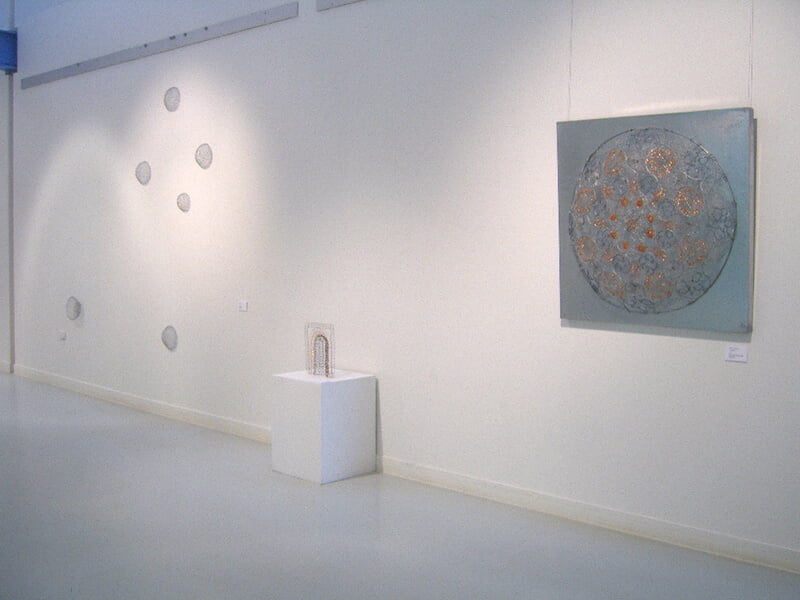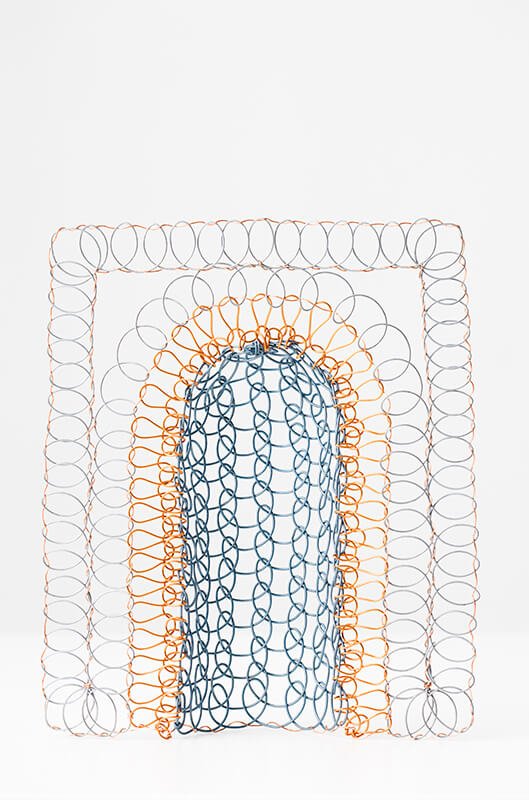Searching
Mining Hall of Fame, Kalgoorlie, Western Australia
3rd Oct - 23rd Nov 2008
The earliest origins of knitting are still widely debated and Nalbinding and Viking knit are two methods that predate true modern knitting. The practice known as nalbinding is thought to have been introduced throughout Europe via the Arab trade routes.
Also known as Egyptian Coptic or single needle knitting, it has been dated back to 3rd century. Viking knitting is a later 10th century method of making metal chains with fine wire knit.
My work is a blend of these ancient processes and more recent knitting techniques. It is multi-layered, exploring contemporary social relevant subject matter through ancient techniques and textile processes using rural materials. I have used knitting and wirework as a vehicle for communicating my ideas.
This body of work is a personal investigation exploring Islam and examines some of the principles behind the culture and religion. Like knitting, Islam has extended throughout the word from ancient cultures. After Christianity, Islam has the second largest population of followers, spreading right across the globe.
Through the medium of wire and process of knitting as a metaphor for the integration of Islam into other civilisations throughout history, I have attempted to explore how Islamic culture fits within Australian culture.
I hope to encourage the viewer to look beyond conventional views, to ask our own questions and consider our personal perceptions of Islam not only as a religion but as a culture. How has it influenced or touched western culture from settlement to our present society?
As you tread on your Turkish carpet and look through the arabesque on your flyscreen door, contemplate that over 10,000 camels, were imported into Australia from the 1860’s. Along with their Afghan masters, these animals were instrumental in opening up Australia’s red centre. They still roam wild today and can be seen from the ‘Ghan’, another tangible reminder nowadays of this early part of Australian history.















